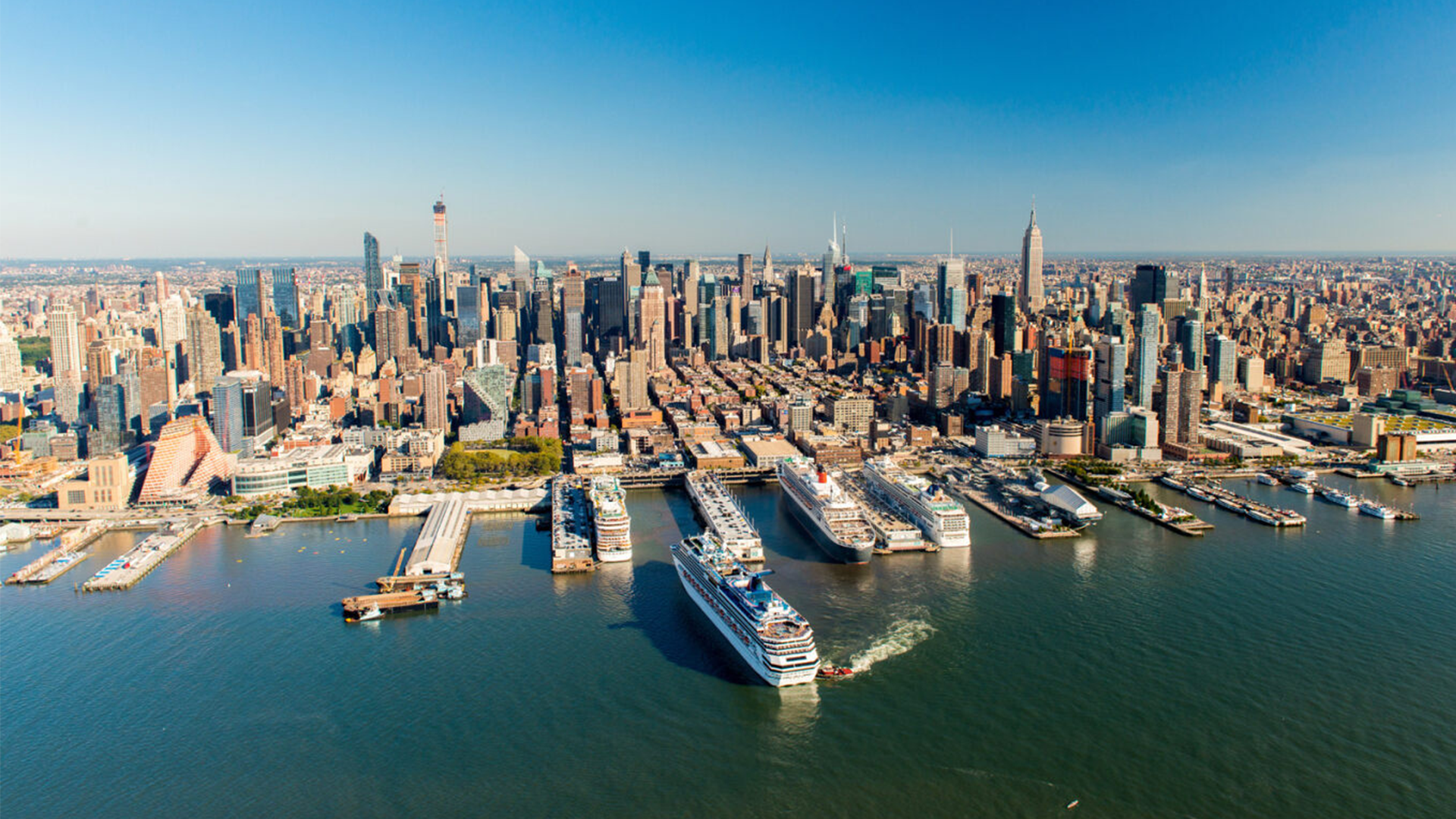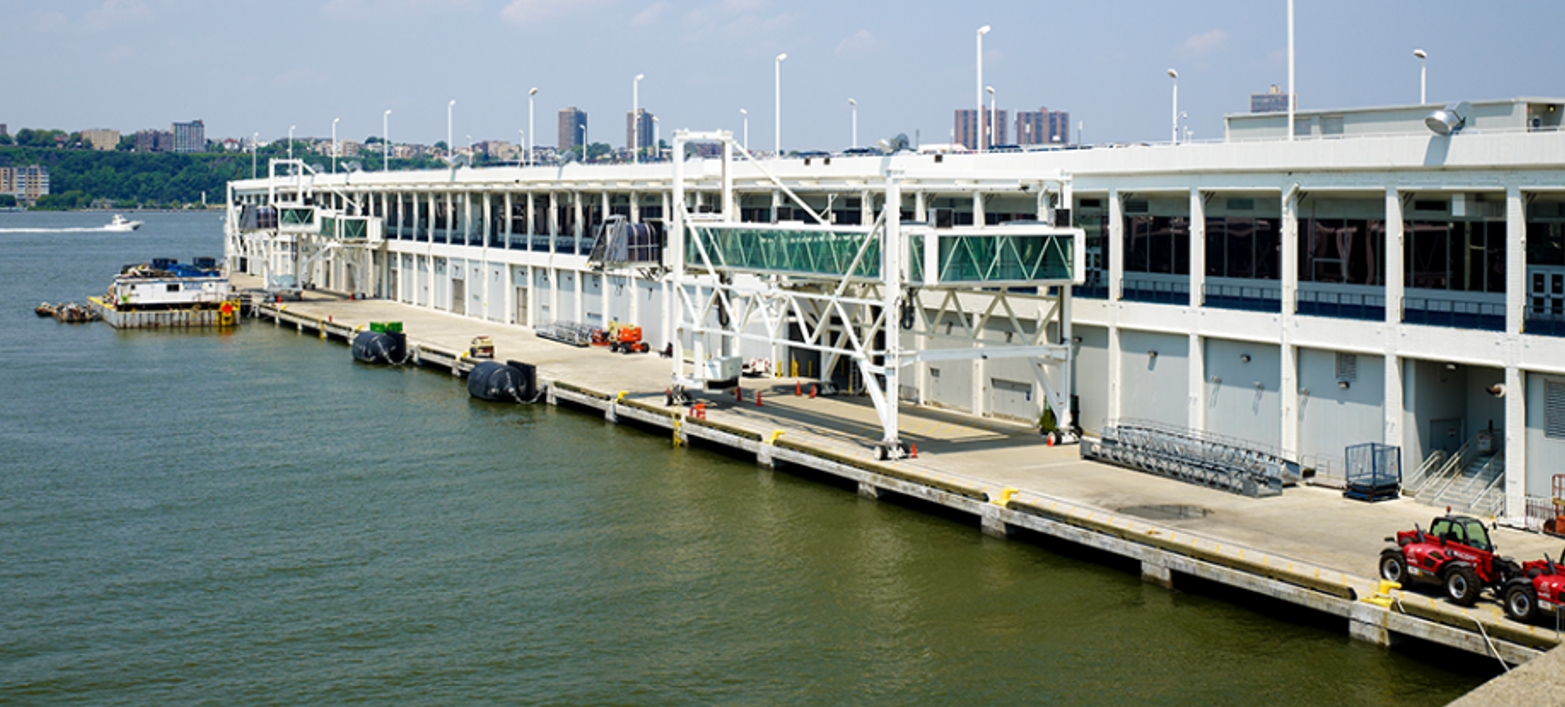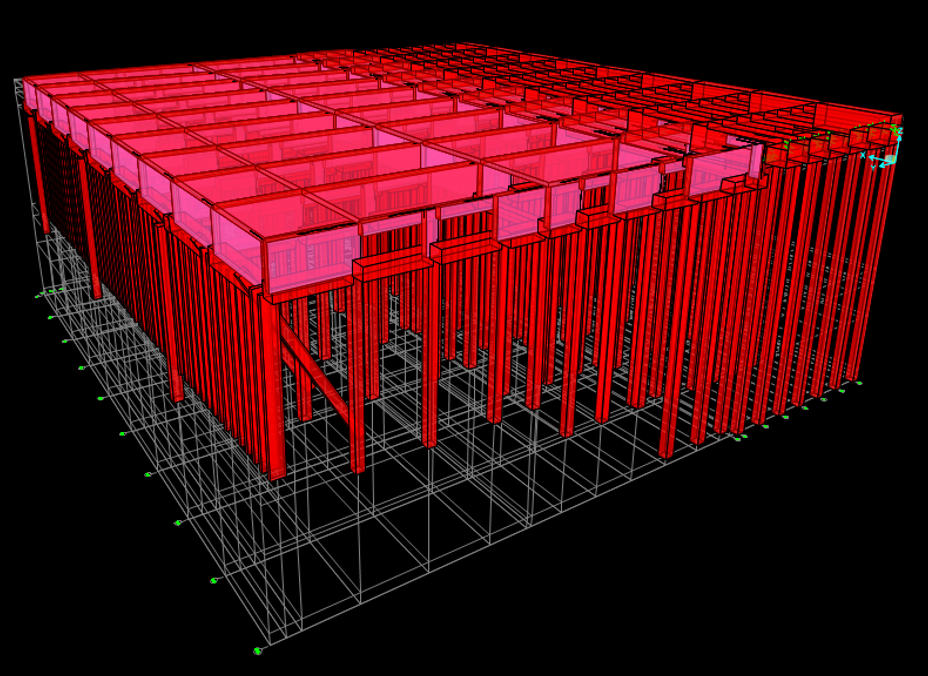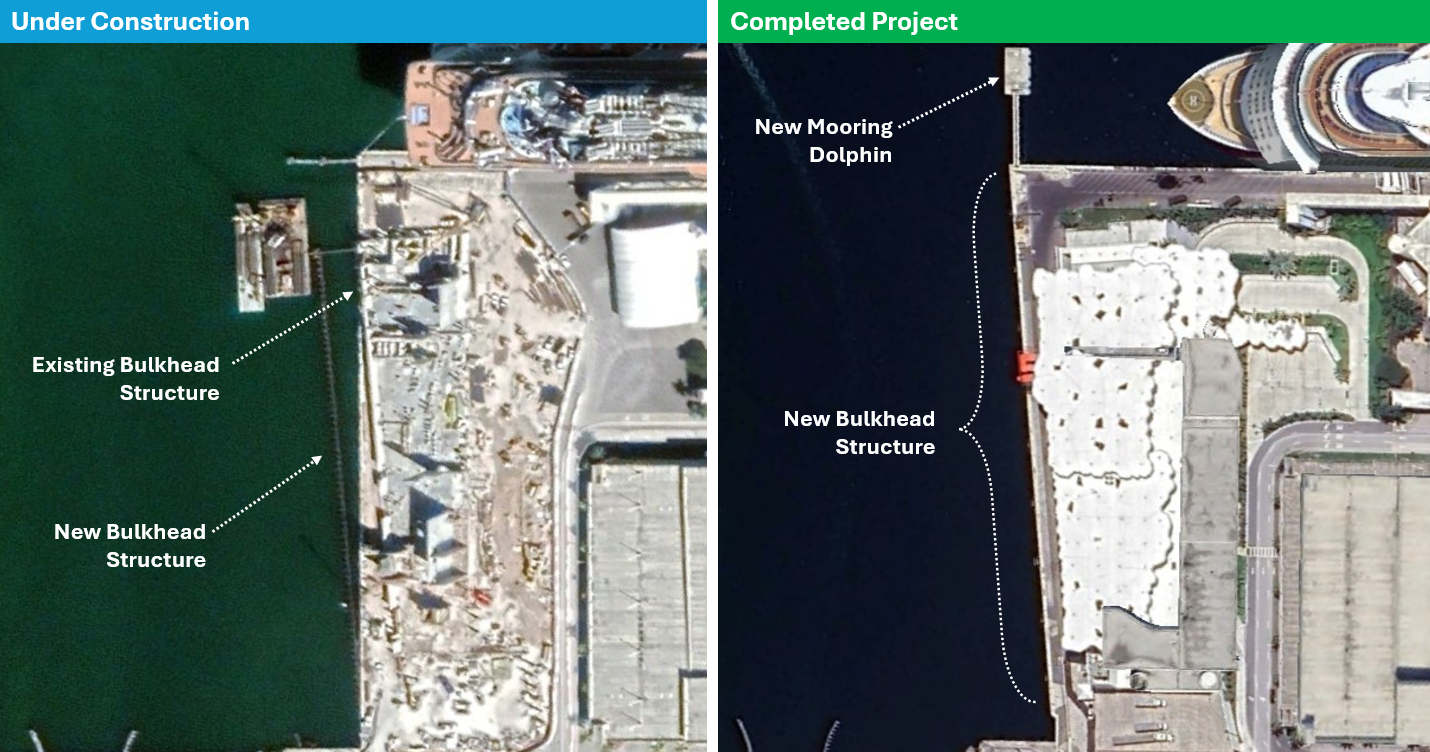Nassau Cruise Port Global
BA’s design for the waterfront features a completely transformed Port and Welcome Center, additional mega berths to accommodate the largest cruise ships in the world...
Gain deeper insights into the maritime industry with detailed updates on key developments and trends, meticulously curated by our team of specialists.

Repurposing an existing marine terminal can be a cost-effective and efficient way to provide cruise facilities in new markets and accommodate growing demand. Our previous BA Perspectives have highlighted the anticipated continued growth of global cruise passengers, which is driving the need for both new destinations and the expansion of existing terminals to handle the latest and largest cruise vessels.
Given BA’s extensive experience in delivering comprehensive marine engineering and operational analysis services to support terminal conversions and expansions, this perspective offers an overview of the engineering design process involved in our day-to-day work.
Mooring & Berthing Analysis
The first step in any terminal redevelopment project is to assess the requirements of the new marine terminal. This begins with defining the design vessels in coordination with the port operator to determine the requirements for critical port infrastructure.
Once the design vessels are identified, a mooring analysis is conducted to evaluate whether the existing infrastructure is sufficient or requires upgrades. This analysis tests mooring arrangements under various environmental conditions—such as wind, current, tides, and waves—to measure the maximum forces on mooring lines and bollards, as well as the maximum movements experienced by the vessel.
Based on this analysis, adjustments to mooring arrangements and the installation of new mooring bollards are made as needed to ensure that a vessel can be moored safely at the berth within acceptable movement limits, and without risk of overstressing the infrastructure. This exercise is critical to prevent dangerous vessel movements or mooring failures, particularly in adverse weather.
Berthing studies are also conducted, in accordance with the latest 2024 PIANC Fender Guidelines (PIANC MarCom WG 211), to determine the energy absorption capacity required for the fenders. If upgrades are needed, both the fenders and any necessary modifications to the supporting wharf structure are designed and specified.
Today, modern berths are now equipped with 200 metric ton bollards to safely moor the largest vessels, that’s enough force to hold the combined weight of thirteen F-16 fighter jets!

Operational Analysis
In addition to ensuring that marine elements function effectively, operational efficiency is also prioritized during terminal redevelopment. Various aspects of the operation are evaluated to optimize performance, enhance the passenger experience, and ensure safety. Key areas of analysis include passenger flow, baggage handling, customs and immigration processes, terminal layout, security measures, amenities, and transportation connectivity.
As part of this process, boarding requirements are reviewed, and passenger boarding bridges are designed and specified as needed. The design vessels are also analyzed to ensure that key access points—such as provisions doors, garbage doors, and shore power connections—remain accessible for all design vessels throughout operations.

The next critical process in the redevelopment of a marine terminal is analyzing the residual capacity of the structure. This involves conducting highly detailed condition surveys to assess the existing structural elements of the terminal. These surveys enable the creation of a repair schedule to ensure the structural components have the necessary capacity for the identified design vessel. Common deficiencies typically arise from corrosion of steel piles, cracking or spalling of concrete elements, impact damage, and other factors.
Once the condition of the existing terminal is known, a structural and geotechnical analysis is performed to confirm whether the existing terminal can withstand the new design loads associated with the terminal’s change of use and to identify any necessary strengthening works.
Structural analysis models are developed using state-of-the-art software to simulate all key structural elements and their interactions under a variety of loading scenarios. This allows for an element-by-element analysis to determine which parts of the existing wharf are adequate for the proposed loadings and which require upgrades.
This analysis is critical as it can lead to significant cost and time savings by precisely identifying which elements (and where) require improvement, allowing for the reuse of those deemed sufficient for the new terminal.
Once the requirements of the new terminal and the capacity of the existing structure are established, the requirements for new structures or modifications can be identified. This can include new fenders and bollards, independent dolphin structures, wharf extensions, or the design of new wharves and jetties.

BA has extensive experience in the detailed structural and geotechnical design of a wide range of marine structures. Some recent and ongoing projects include:
BA offers a wide range of marine services for repurposing and expanding existing marine terminals. For any further information or enquiries please contact our Director of Ports and Marine Engineering, Daniel Ramos (daniel.ramos@woolpert.com)
